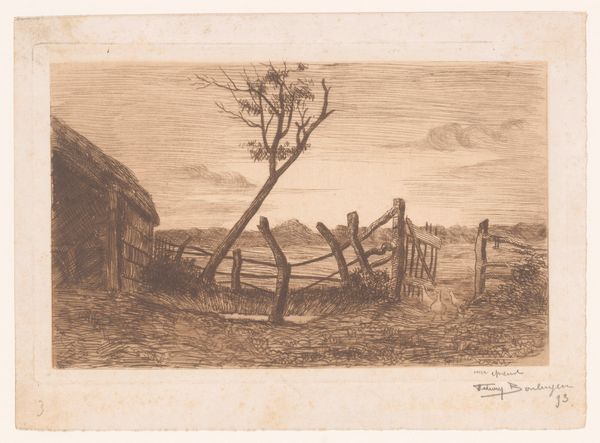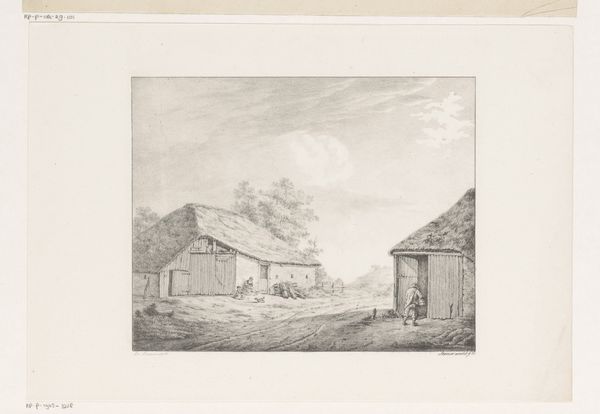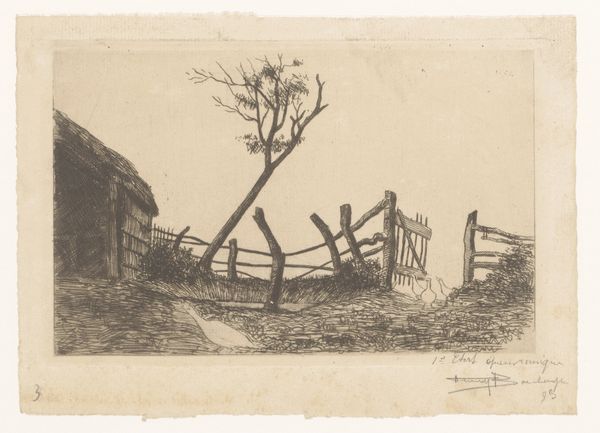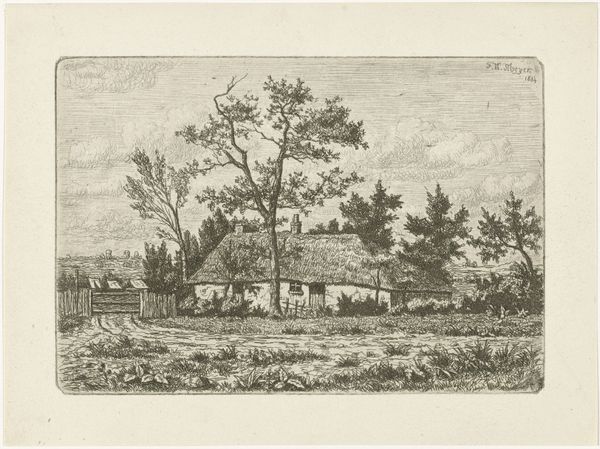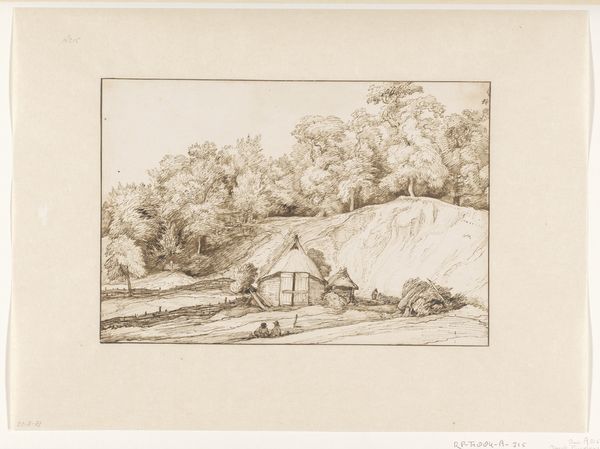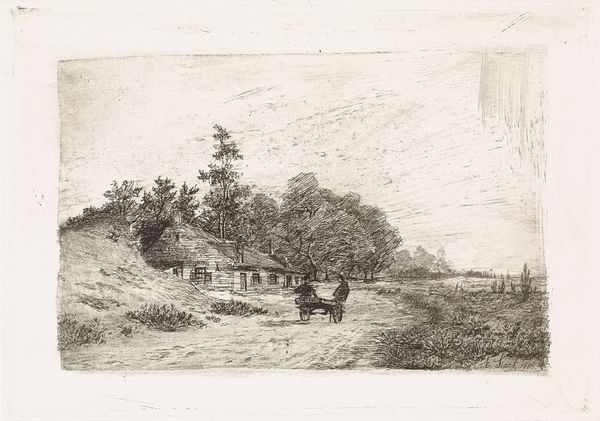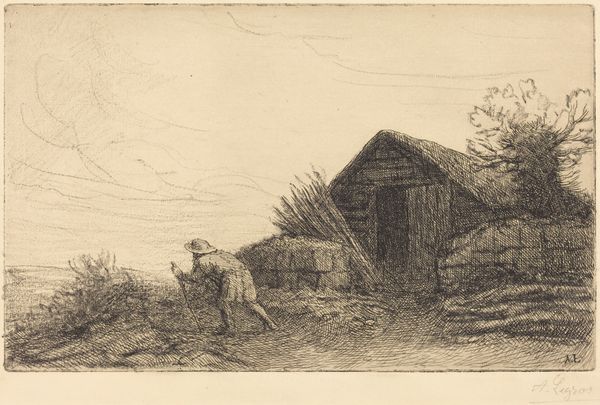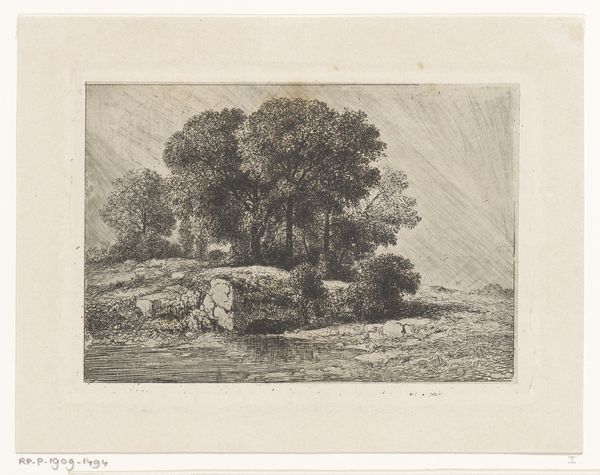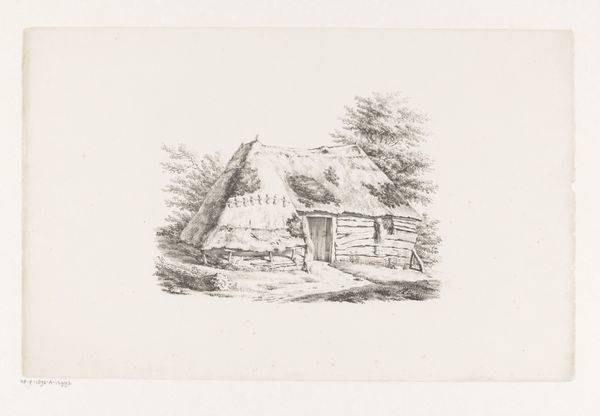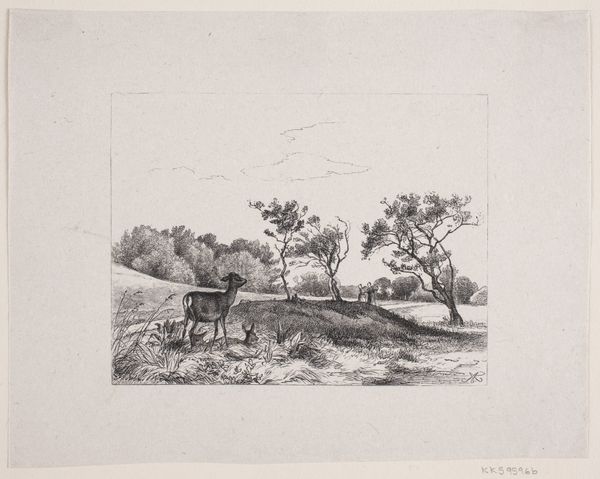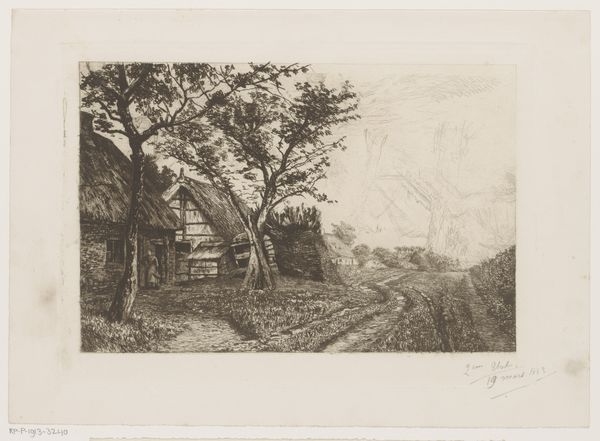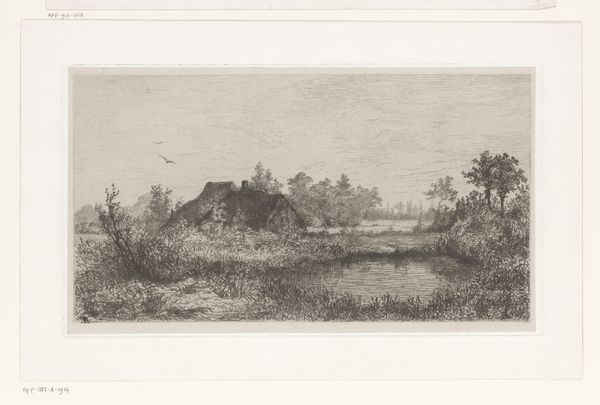
drawing, print, etching, paper, ink
#
drawing
# print
#
etching
#
landscape
#
etching
#
paper
#
ink
#
pencil drawing
#
geometric
#
realism
Dimensions: 118 mm (height) x 180 mm (width) (plademaal)
Curator: Look at this landscape! This etching from 1863 is entitled "Landskab med et led," or "Landscape with a Gate," by Otto Haslund, held in the collection of the SMK. What strikes you initially about this seemingly quiet scene? Editor: It feels incredibly still, almost contemplative. The delicate lines create a sense of quiet solitude. The sheep standing by the gate, looking outward, evokes a yearning for something beyond the immediate. Curator: It’s interesting that you note the solitude. The image portrays rural Denmark during a period of intense socio-economic transition. Land reforms and agricultural innovations were reshaping the countryside, causing displacement and a sense of loss for traditional ways of life. Editor: That certainly resonates. The gate itself could symbolize that transition, a threshold between the familiar and the unknown. And I wonder, does the bird perched on the stone wall have a symbolic purpose here? In art, birds often represent the soul or freedom. Curator: Potentially, yes. The image uses familiar symbols. It's difficult to say definitively without more information on Haslund's personal context, but consider the time he created it. National Romanticism was in full swing. Artists turned to the landscape as a repository of national identity and moral value. Editor: The choice of etching also adds another layer. Etchings can feel very intimate and immediate, yet they're also inherently reproducible. The tension between the personal vision and the potential for mass consumption mirrors some of those cultural tensions of the period. The very presence of the sheep suggests innocence. Curator: Absolutely, the technical execution plays a large part. Remember that the rural population were the assumed custodians of tradition, honesty, and the perceived real soul of Denmark at that moment in time. Reproducing this scene could thus serve the goal of promoting the nationalist ideology to all social classes. Editor: It’s amazing how much visual weight is packed into such a seemingly simple image. Now I find that my initial feeling of tranquility has been joined by a bit of bittersweet sadness for a world that was already disappearing even as the work was made. Curator: Indeed. Seeing artwork through this lens enriches the experience so much more. We’ve gained such rich new layers of significance in Haslund's depiction today.
Comments
No comments
Be the first to comment and join the conversation on the ultimate creative platform.
